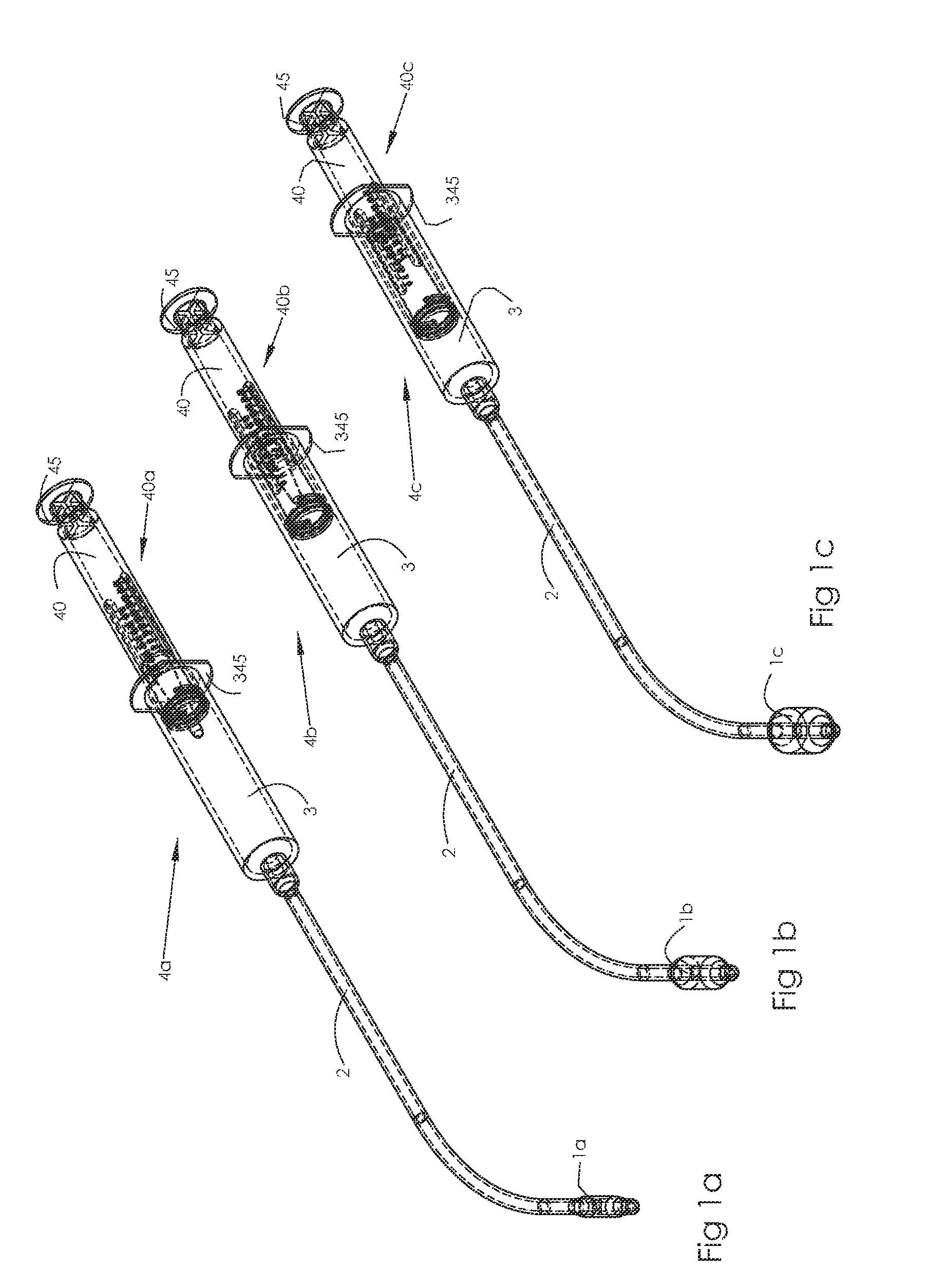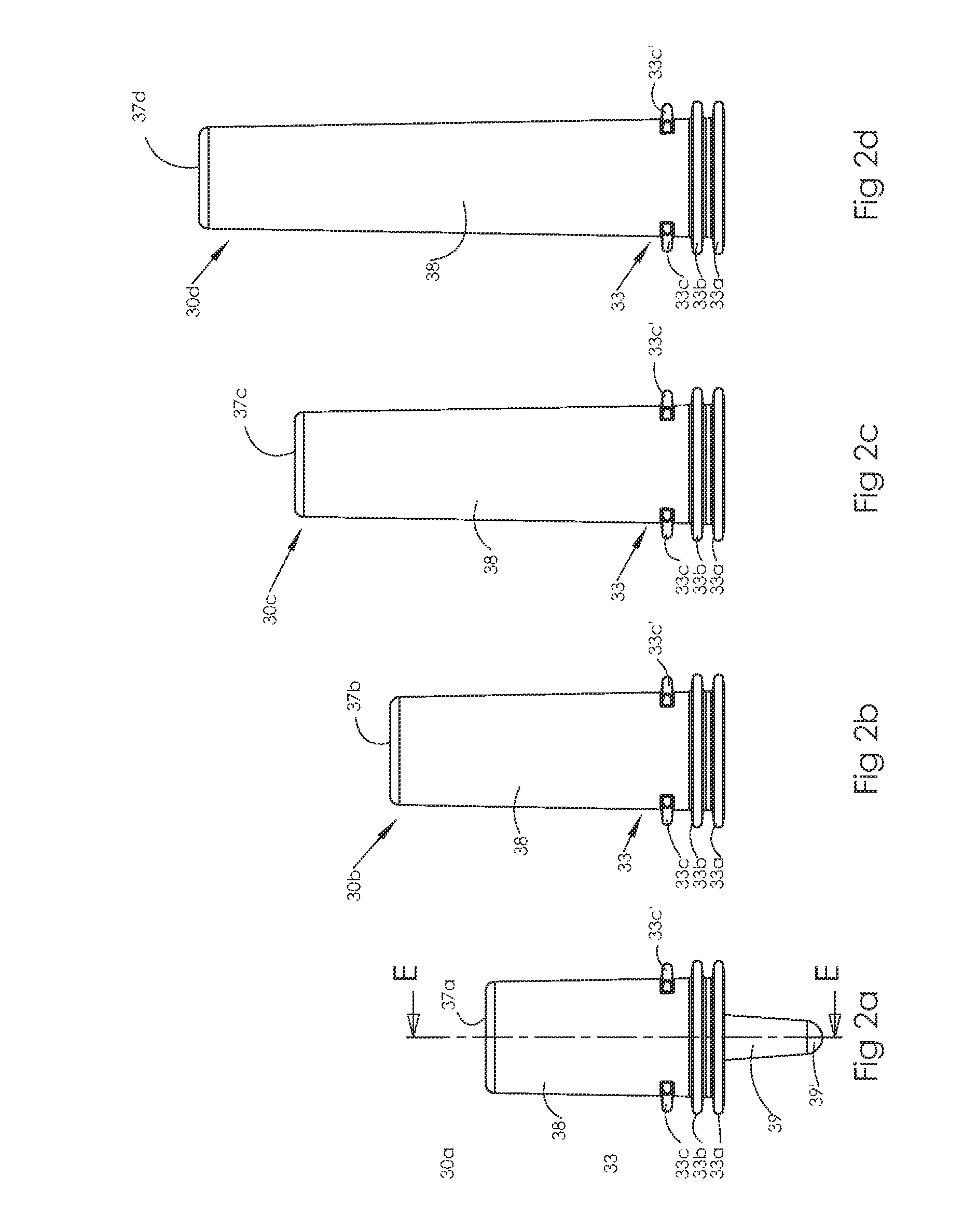Rolling diaphragm pressure sensor
a diaphragm and pressure sensor technology, applied in the field of pressure measurement, can solve the problems of wall thickness variation, pressure sensitivity variation, and pressure sensitivity variation, and achieve the effect of clear and accurate pressure reading
- Summary
- Abstract
- Description
- Claims
- Application Information
AI Technical Summary
Benefits of technology
Problems solved by technology
Method used
Image
Examples
first embodiment
[0046]FIG. 4a shows an enshrouding structure 40 (also referred to as the plunger in a syringe application). It has slits 46 near its base that axially and rotationally constrain the sensor via the sensor's snap-in tabs 33c and 33c′. The sensor region 41 is comprised of a slot 42b, which is not needed if the plastic is very clear, and a scale 42a which can be molded integral or inked on or even be a label applied. Only one side is shown here, and for ergonomic reasons, multiple sets placed circumferentially around the structure 40 body can be used. The sensor region needs to be located and scaled in accordance with the sensor's sensitivity and size. Shown here, it is sized and labeled to indicate centimeters of water pressure. Note that the sensor region 41 (and its mirror image) is aligned with the slots 46 so the part can easily be molded with two halves and a simple core.
second embodiment
[0047]FIG. 4b shows an enshrouding structure 40′ (also referred to as the plunger in a syringe application). It also has slits 46 near its base that axially and rotationally constrain the sensor via the snap-in tabs 33c and 33c′. The sensor region 44 is comprised of cylindrical lens structures 43b that help magnify the end position of the sensor and makes it easier to read the position of the end of the sensor with respect to the scale 43a. The scale 43a which can be molded integral or inked on or even be a label applied. Only one side is shown here, and for ergonomic reasons, multiple sets placed circumferentially around the structure 40′ body can be used. The sensor region needs to be located and scaled in accordance with the sensor's sensitivity and size. Shown here, it is sized and labeled to indicate centimeters of water pressure. Note that the sensor region 44 (and its minor image) is aligned with the slots 46 so the part can easily be molded with two halves and a simple core....
PUM
| Property | Measurement | Unit |
|---|---|---|
| pressure | aaaaa | aaaaa |
| length | aaaaa | aaaaa |
| diameter | aaaaa | aaaaa |
Abstract
Description
Claims
Application Information
 Login to View More
Login to View More - R&D
- Intellectual Property
- Life Sciences
- Materials
- Tech Scout
- Unparalleled Data Quality
- Higher Quality Content
- 60% Fewer Hallucinations
Browse by: Latest US Patents, China's latest patents, Technical Efficacy Thesaurus, Application Domain, Technology Topic, Popular Technical Reports.
© 2025 PatSnap. All rights reserved.Legal|Privacy policy|Modern Slavery Act Transparency Statement|Sitemap|About US| Contact US: help@patsnap.com



